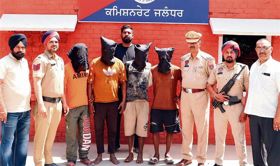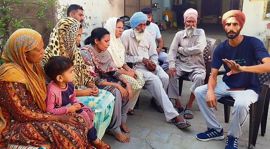
Some of the residents who have lost their livelihood in Kotla.
Rajiv Mahajan
Nurpur, March 1
A few decades ago, there were 11 “gharats” (watermills) running in Dehar and Bharal khuds of Kotla and the surrounding villages in the Jawali subdivision in Kangra district, providing livelihood to many families in the area.
With the passage of time, and the emergence of mechanical techniques of grinding wheat and maize, only three of these “gharats” being run through a kuhal (water channel) of Dehar khud remain at Kotla.
Recently, five poor families running the three remaining ‘gharats’ lost their source of income as the private construction company engaged by the National Highways Authority of India (NHAI) for the construction of Pathankot-Mandi highway widening project package-2 (from Bherkhud to Batees Meel) diverted the water channels being used for running their “gharats”.
The affected families — who had been earning their livelihood through these “gharats” for many generations — received no compensation after they were shut down.
According to Pratap Chand, Praveen Kumar, Parshotam, Prem Chand and Inderpal, their families were facing a lot of hardships in meeting their daily expenses after losing their only source of livelihood due to the closing of the watermills.
They appealed to the state government to intervene in the matter, and to the NHAI authorities to assess their losses and provide immediate compensation to them.
For a past one year, the affected families had been running from pillar to post seeking a compensation of Rs 2 lakh each, and the restoration of their “gharats” so that they could sustain their families.
In the past, “gharats” were prevalent in most parts of Kangra on the banks of rivers downstream of fast-flowing natural water channels. A turbine is installed below the fast stream of water, which is driven by the flowing water. Inside the “gharat”, two round and large stones are placed, one above the other. The turbine is connected to these stones. When water falls on the turbine, both stones start rotating. A hole is made in the stone placed on top. Grains are fed through this hole and get ground between the stones.
Join Whatsapp Channel of The Tribune for latest updates.



























